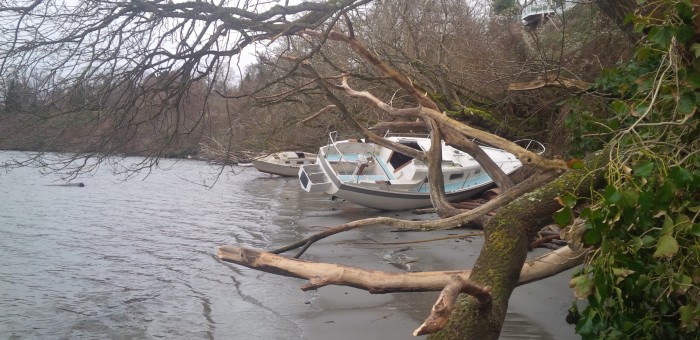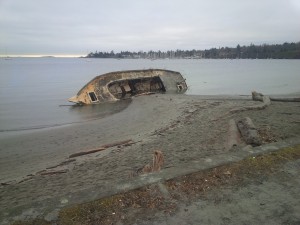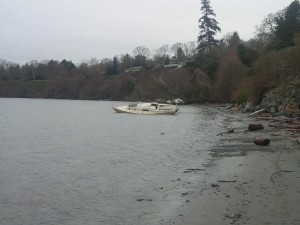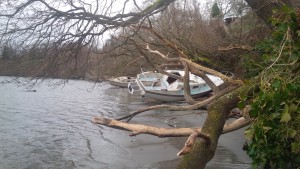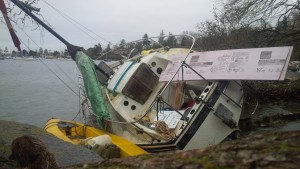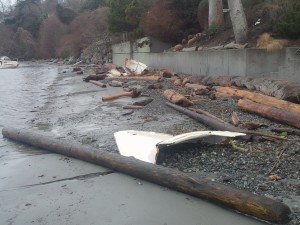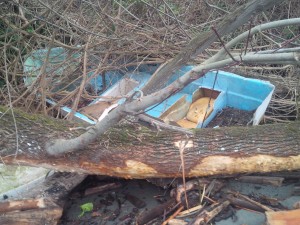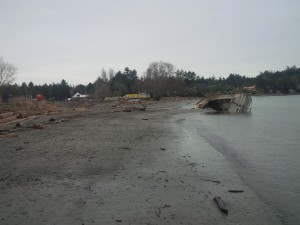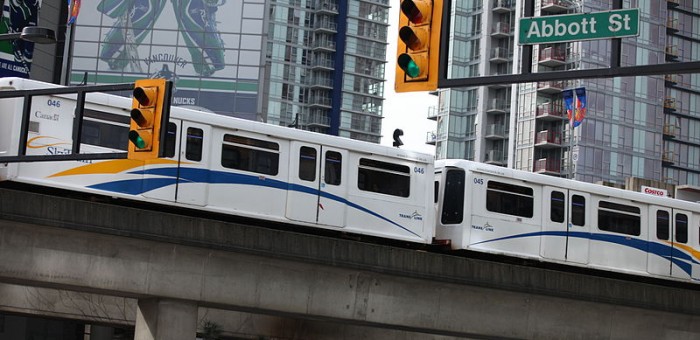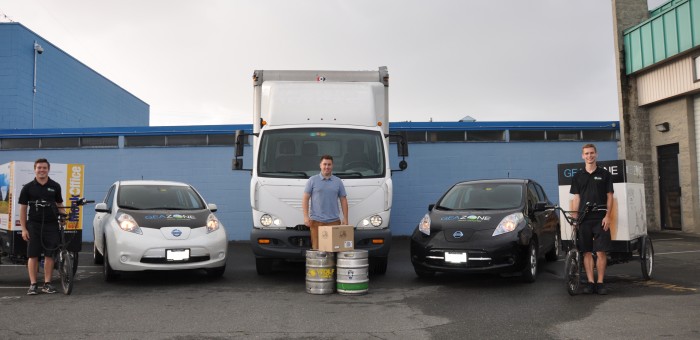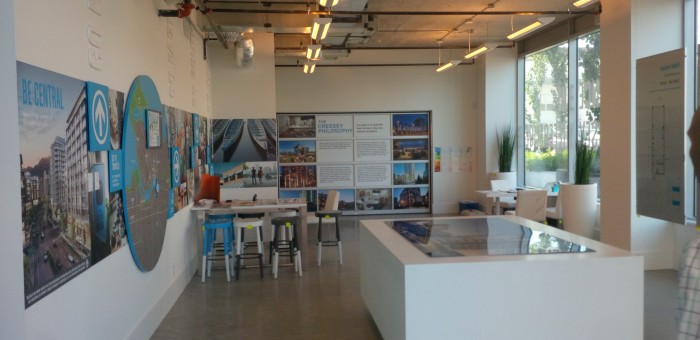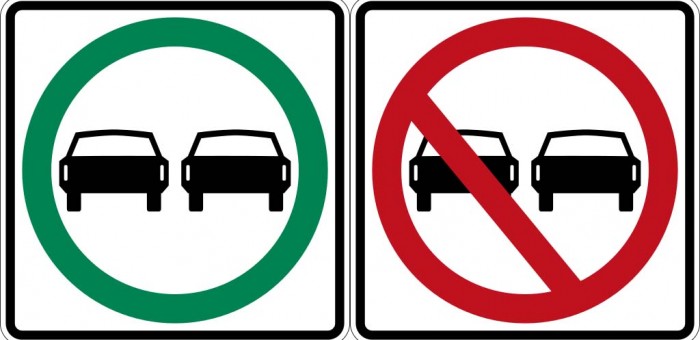Transportation
We Need to Deal with Derelict Vessels in a Timely Manner
Have you walked along Gyro beach in Cadboro Bay lately? It looks like a graveyard for derelict vessels.
Dealing with derelict vessels can be a jurisdictional nightmare. To make matters worse, the municipal boundary between Oak Bay and Saanich puts some of these vessels in the Saanich intertidal zone and some in the Oak Bay intertidal zone. It’s even possible that one of these ships is half in Saanich and half in Oak Bay.
This is not a new situation in British Columbia. In 2014, the Ministry of Forests, Lands and Natural Resource Operations released a comprehensive report entitled: Dealing with problem vessels and structures in BC waters. The report outlines the jurisdictional conundrum and specifically notes:
Often, there is no simple answer to the question: Who should be dealing with this problem?”
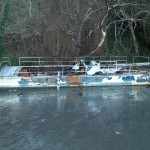 In addition, the report provides information as to who should be contacted if a derelict vessel is found. The contact information is quite detailed to specific cases but fails in the larger case when numerous derelict vessels are washed ashore. This is the situation in Cadboro Bay. In addition, the report has a caveat in the form of the following disclaimer:
In addition, the report provides information as to who should be contacted if a derelict vessel is found. The contact information is quite detailed to specific cases but fails in the larger case when numerous derelict vessels are washed ashore. This is the situation in Cadboro Bay. In addition, the report has a caveat in the form of the following disclaimer:
Readers are cautioned that this paper is not legal advice. It is the intention of Ministry of Forests, Lands and Natural Resource Operations to update this paper as provincial and federal programs evolve.
My colleague, Adam Olsen has written a blog entry detailing longstanding municipal concerns regarding the lack of federal and provincial leadership in dealing with derelict and abandoned vessels that pollute our coastline. Most recently he worked to raise awareness of the plight of the Chilcotin Princess at the abandoned fish cannery in Namu, BC. The good news is that province and the federal government worked to remedy the situation at Namu, but the piecemeal approach to the management and disposal of derelict and abandoned wrecks is not working.
On Friday January 15, I walked the length of Gyro Beach to get a sense of the scale of the problem we are facing in the riding of Oak Bay-Gordon Head. It was far worse than what I had expected. For quite some time, there has been one derelict vessel (see thumbnail to the right above) that was difficult to reach (except at low tide). Last year I’d inquired as to the possibility of removing it and quickly realized the complexity of the jurisdictional quagmire. But the situation now is very serious. Below I show a few images of the vessels that were present.
So where do we go from here? Clearly the status quo is not working and clearly this is neither a new problem nor one that will go away any time soon. Perhaps a way forward is to explore the innovative steps that have been taken by our friends in Washington State.
While I will be exploring broader policy solutions in the months ahead, I have sent the Minister of Forests, Lands and Natural Resource Operations a letter (reproduced below) urging him to deal with an immediate and urgent problem. One of the many wrecks (see image below) on the beach in Cadboro Bay is immediately adjacent to Gyro Park which has been extensively upgraded and improved over the last few years. Gyro park is a regional treasure and has been the playground of several generations of young children (including my wife and me in the 1960s and 1970s and our children in the 1990s and 2000s). Having this wreck so close to a children’s playground is certainly unsafe. And we do not want to wait until an accident happens to have it removed.
Letter to Minister Thomson
Via email to: FLNR.minister@gov.bc.ca
Honourable Steve Thomson
Minister of Forests, Lands and Natural Resource Operations
Room 248, Parliament Buildings
Victoria, BC V8V 1X4
Dear Minister Thomson:
Re: Derelict wreck in Cadboro Bay
I have been contacted by residents in my riding of Oak Bay-Gordon Head and the Cadboro Bay Resident’s Association (“CBRA”) with respect to the beached derelict vessel Pacific Sun King that washed up on December 5, 2015. The residents are very concerned about the vessel as a hazard in Cadboro Gyro Park where it is located, on the Crown Provincial foreshore in the upper inter-tidal zone of Cadboro Bay. The vessel is interfering with public access and presents a danger to children who play in the park and in the area. This area is heavily used by the public and especially children.
The CBRA have been in contact with the Municipality of Saanich and their representatives have confirmed that the responsibility for the removal of the wreck does not fall to Saanich since it is located seaward of the formal boundaries of the park.
I am writing to ask the Provincial Government to take the necessary steps to deal with this urgent matter. In addition to a safety issue for children and residents who access the park and beach, the vessel contains a diesel fuel tank and potential seepage that is an environmental hazard.
I look forward to a reply at your earliest opportunity.
Best wishes,
Andrew Weaver, MLA
Oak Bay-Gordon Head
Probing the Government’s Lack of Leadership with Translink
Today in question period I rose to challenge the government’s lack of leadership with respect to Translink. Since the Metro Vancouver transit referendum failed earlier this year, we’ve been waiting for signs that this government understands the challenges facing the Lower Mainland’s transit infrastructure and that it understands the leadership role it needs to play.
Below I include both the video of the exchange as well as the Hansard transcript. At the end I reproduce the media statement my office released in conjunction with my line of questioning today.
Video of Question Period
Question
A. Weaver: Since the Metro Vancouver transit referendum failed earlier this year, we’ve been waiting for signs that this government understands the challenges facing the Lower Mainland’s transit infrastructure and that it understands the leadership role it needs to play.
The appointment of a new minister responsible for TransLink signalled to many that government was about to take its leadership role seriously. We heard almost immediately from the minister that “nothing is off the table” and that he had an open mind to changing the way TransLink was managed. And yet only a couple of months after those comments were made, we have heard that in closed meetings, the minister took the idea of giving more control over TransLink to local governments off the table.
Can the minister please let this House know what has changed since he said all options were on the table and what the minister’s plan is to ensure that the much-needed transit investments aren’t put off until it’s too late?
Minister’s Response
Hon. P. Fassbender: I appreciate the question, because at the meeting I had with the Mayors Council, I clearly said that we are willing to work with the leadership in the region to move toward solutions, not focusing on the problems but looking at opportunities for solutions. But I also challenged the mayors for them to step up to their leadership role in working with the board that they appoint to ensure that we find a path to solutions, that we look at the options that are available and to remember that this government has invested billions of dollars in transportation in the province and in Metro Vancouver.
This government is committed to working with the leadership in the region to find the solutions that will ensure an integrated transportation system for the citizens and for the movement of goods and services.
Supplementary Question
A. Weaver: Thank you, hon. Speaker, for giving me the opportunity to explore that a little more. The question of local control is critical because the province is dramatically under-resourcing its local governments, all the while requiring them to pay for a third of the transit costs.
Furthermore, both the minister and the Premier have slammed the door on the mayor’s plans to develop new, innovative funding solutions, saying that they will require a new referendum if they are to be considered. The government, frankly, has paralyzed transit planning in Metro Vancouver, and they have abdicated their responsibility to show British Columbians leadership.
My question to the Minister Responsible for TransLink is this. Since the provincial government clearly has no interest in providing leadership on the transit file, how does the minister expect local governments to move forward if the province is blocking local control over TransLink and preventing local governments from even considering innovative ways to make up for their lack of financial resources?
Minister’s Response
Hon. P. Fassbender: I know the member probably doesn’t know this or is choosing to ignore it, but I’m sure his taxpayers are very clear that they are paying hospital tax that is not being paid by the residents of Metro Vancouver. Also, clearly, from the day that I was appointed, the first thing I did was select two very capable people to sit on the TransLink board as government representatives, to clearly show that we are engaged in finding solutions and are willing to work with the region to ensure those solutions are found.
In addition, it is very clear this government has said our funding support for transit infrastructure development is on the table, and we’re simply asking the region to come forward with their recommendations on how they will fund their third. I find it interesting that the members opposite, as well, are opposed to asking the residents of Metro their opinion on future funding sources, because indeed, they have a right to do that, and this government will give them that right.
Media Statement
Media Statement October 8, 2015
Funding innovation required for local infrastructure projects
For immediate release
Victoria B.C. – In the B.C. Legislature today Andrew Weaver, MLA for Oak Bay – Gordon Head and Deputy Leader of the B.C. Green Party questioned the Honourable Peter Fassbender, Minister of Community, Sport, Cultural Development and Minister responsible for Translink, as to why the provincial government was restricting local government revenue options for critical infrastructure projects, specifically in Metro Vancouver.
Currently the Provincial Government is requiring Municipal Governments to account for one third of the total costs for transit improvements, despite the fact that the municipal governments receive substantially less in revenue than other levels of government.
“This approach by the government to restrict the ability of local governments to look at new forms of revenue, such as tolls or road pricing, to fund transit and other major infrastructure projects places them in an untenable position” said Andrew Weaver, “The Minister and Premier are risking a total paralysis in transit planning if any new funding sources will require a new referendum, as they are indicating.”
An option the provincial government could explore is using the province’s widely heralded carbon levy to assist Translink, and provide an available fund for communities throughout the province facing similar concerns. The carbon levy is currently fixed at $30 per tonne, and raises $1.3 billion annually in a revenue neutral fashion. Increasing the levy by $5 per year to a maximum of $50 would add an additional $1 billion annually after four years. The carbon levy could remain revenue neutral by ensuring local governments would not raise residential taxes to fund major infrastructure projects.
“The Provincial government has been quick to pass off new responsibilities to local governments, but has completely restricted any new financial resources or innovative funding sources.” said Andrew Weaver, “The premier and ministers continually call for innovation from local government. It is about time we saw some of that here in the legislature.”
– 30-
Media Contact
Mat Wright
Press Secretary – Andrew Weaver MLA
1 250 216 3382
mat.wright@leg.bc.ca
Parliament Buildings
Room 027C
Victoria BC V8V 1X4
Celebrating Local Businesses in Our Community – Geazone
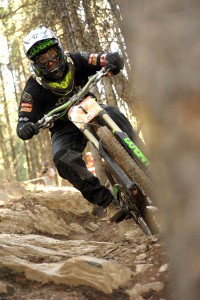 A four-time Canadian National Downhill Mountain Bike champion, Geazone’s president and CEO Andrew Mitchell is used to taking risks and working fast. “In downhill racing you have to live in the future, anticipating and preparing for what is around every corner on the trail,” said Geazone’s director of sales and marketing Greg Parish. When it comes to business, it seems Andrew takes the same approach.
A four-time Canadian National Downhill Mountain Bike champion, Geazone’s president and CEO Andrew Mitchell is used to taking risks and working fast. “In downhill racing you have to live in the future, anticipating and preparing for what is around every corner on the trail,” said Geazone’s director of sales and marketing Greg Parish. When it comes to business, it seems Andrew takes the same approach.
Geazone is a zero-emission courier company that uses tricycles, electric cars, and 5-tonne electric trucks to do their deliveries. On a full charge, Geazone’s electric fleet can deliver goods from Victoria to Nanaimo, and everywhere in between, without emitting a single gram of greenhouse gases. They do a Victoria to Vancouver run too, taking beer into the city and stopping to pick up hops for Victoria breweries on the way back.
Geazone presently has 100 active clients, many of them breweries, including Lighthouse, Red Arrow, Saltspring Island Ales, Wolf Brewing Company, and Hoyne. “The local beer and wine sectors seem to be the ones going green first,” said Andrew of his clients.
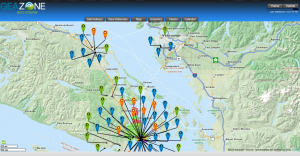 Over the course of this series it has been amazing to see so many B.C. entrepreneurs working together to support one another’s visions for business done better. When I met with Sean Hoyne, of Hoyne Brewing Company, he talked about how his brewery has partnered with Geazone to deliver their beer. “I like supporting Andrew because he is a young entrepreneur doing the right thing,” Sean told me. His praise was well deserved and wonderfully timed as I already had a meeting with Geazone booked for the following month.
Over the course of this series it has been amazing to see so many B.C. entrepreneurs working together to support one another’s visions for business done better. When I met with Sean Hoyne, of Hoyne Brewing Company, he talked about how his brewery has partnered with Geazone to deliver their beer. “I like supporting Andrew because he is a young entrepreneur doing the right thing,” Sean told me. His praise was well deserved and wonderfully timed as I already had a meeting with Geazone booked for the following month.
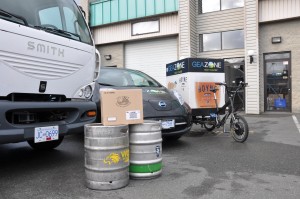 Geazone has doubled its growth every year since they opened for business in 2012. In just three years they have prevented over 100,000 kg of carbon emissions from entering the atmosphere and they don’t plan on slowing down anytime soon. Up next, they hope, is the addition of electric semi-trucks to their fleet (which can travel 160km/charge), a warehouse in Vancouver, and extra charging stations to broaden their range. “By the time people catch on we’ll be five years ahead,” said Greg.
Geazone has doubled its growth every year since they opened for business in 2012. In just three years they have prevented over 100,000 kg of carbon emissions from entering the atmosphere and they don’t plan on slowing down anytime soon. Up next, they hope, is the addition of electric semi-trucks to their fleet (which can travel 160km/charge), a warehouse in Vancouver, and extra charging stations to broaden their range. “By the time people catch on we’ll be five years ahead,” said Greg.
If Geazone replaced one of the semi-trucks delivering beer from Victoria to the British Columbia liquor distribution branch (BCLDB) in Vancouver with an electric model they would reduce carbon dioxide emissions on that route by roughly 37,000 kg per year.
Let’s take a look at the numbers:
- The round trip is about 140 km.
- The trucking industry vehicle fleets average 35-40 litres/100 km (so let’s choose 38).
- This means that on average a single round trip would use 140 km x (38 litres/100 km) = 53 litres of diesel (that would cost about $64 per trip at a price of $1.20 per litre).
- Now according to the US Energy Information Administration, 22.38 pounds of carbon dioxide are emitted during the combustion of one US gallon of diesel. This converts to 2.7 kg/litre.
- And so the average round trip in a diesel-powered truck would release 2.7 kg/litre x 53 litres = 143 kg of carbon dioxide emissions to the atmosphere.
- Now if we assume that only one trip can be made a day so that 260 trips occur each year with trucks operating only Monday through Friday, then in one year, 143 kg x 260 trips = 37,000 kg of carbon dioxide is emitted (and the annual cost of fuel would be $64 x 260 trips = $16,640).
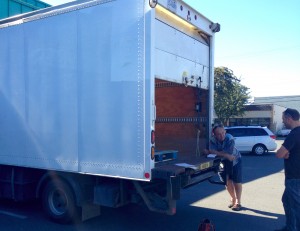
Cost-wise, their services are not more expensive than their diesel-reliant counterparts. If anything, Andrew said, they are more competitive than non-electric couriers because they don’t have to buy gas. Typical couriers will spend $80.00 or so on fuel per full day of deliveries; it costs Geazone $2.00 to charge up a Nissan Leaf for the day and $10.00 – $12.00 to charge their 5-ton trucks. Coming back to the numbers, the net annual operating savings on that return trip from Victoria to the BCLDB in Vancouver would be about $14,000 for a single truck.
That said, large courier companies do have the ability to undercut the market in a way Geazone cannot. But Andrew’s clients back him up, he said, and support Geazone because they believe in what he is doing.
The wider community in Victoria is getting on board too and the bike couriers are always a big hit at events and festivals, Andrew said. We found it amusing to learn that the Geazone team have been scolded on a few occasions by concerned citizens for leaving their trucks running while they load. “I told them it was electric but they didn’t believe me!” said Greg with a laugh. “I had to show them that the truck doesn’t even have an exhaust pipe — then they were impressed.”
Geazone is leading the way in BC with innovative zero-emission transport solutions. And at the same time, they’re saving money and creating job growth in the emerging 21st century economy.
Celebrating Local Businesses in Our Community – ElectraMeccanica & InterMeccanica
This is the fifth in our series highlighting innovation and creativity within our region’s business sector.
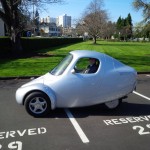 Next time you are driving to work, check out the cars around you. I’ll bet you’ll find that the overwhelming majority are single-occupant, gas-powered vehicles weighing more than 1000-1500 kilograms. In fact, you and your automobile probably fall into this category as well. Imagine all the energy that is wasted in transporting all that extra weight. And wasted energy is wasted money!
Next time you are driving to work, check out the cars around you. I’ll bet you’ll find that the overwhelming majority are single-occupant, gas-powered vehicles weighing more than 1000-1500 kilograms. In fact, you and your automobile probably fall into this category as well. Imagine all the energy that is wasted in transporting all that extra weight. And wasted energy is wasted money!
Very few of us travel more than 100 kilometres a day in our car, yet many of us drive large vehicles as single occupants to and from work five days a week. For example, the commute from the new housing developments along Happy Valley Road to downtown Victoria is about 40 kilometres return. The commute from Tsawwassen to downtown Vancouver is around 70 kilometres return. So a fully electric single occupancy vehicle with 130 kilometre range on a single charge can certainly target a niche market. And that’s what Vancouver-based ElectraMeccanica is planning to do.
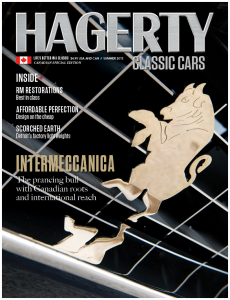 ElectraMeccanica has partnered up with InterMeccanica, a family-owned New Westminster-based high-end automobile manufacturer that has been custom building cars for their niche market since 1959. InterMeccanica knows how to make cars. Their precision and attention to detail is legendary; their rich history of innovation was recently the subject of a feature story in the Canadian edition of Hagerty. Now owned and operated by Henry Reisner, the oldest son of the founder Frank Reisner, InterMeccanica continues to produce custom order Porsche 356 Roadster and Speedster replicas.
ElectraMeccanica has partnered up with InterMeccanica, a family-owned New Westminster-based high-end automobile manufacturer that has been custom building cars for their niche market since 1959. InterMeccanica knows how to make cars. Their precision and attention to detail is legendary; their rich history of innovation was recently the subject of a feature story in the Canadian edition of Hagerty. Now owned and operated by Henry Reisner, the oldest son of the founder Frank Reisner, InterMeccanica continues to produce custom order Porsche 356 Roadster and Speedster replicas.
The partnership with ElectraMeccanica is a new venture for InterMeccanica and their imminent move back to their old location in the new Meccanica building in southeast False Creek represents an exciting step forward. The move was made possible through the vision of Scott Cressey of Cressey Development Group and Jerry Kroll CEO of ElectraMeccanica. The new Meccanica building is a unique mixed use light industrial / residential development.
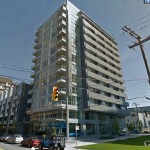 ElectraMeccanica, the brainchild of entrepreneur automobile expert Jerry Kroll, recently bought up the rights for the Sparrow, a car designed and showcased by Mike Corbin at the 1996 San Francisco auto show. Corbin Motors went on to produce several hundred Sparrows before becoming a victim of sour economic times in 2003. In 2004, Ohio-based Myers Motors stepped in to give the Sparrow a second chance. Unfortunately, despite rebranding it the Myers Motors NmG (No more Gas), improving its battery performance and redesigning the exterior, the Sparrow once more fell the way of troubling economic times. But this time should be different.
ElectraMeccanica, the brainchild of entrepreneur automobile expert Jerry Kroll, recently bought up the rights for the Sparrow, a car designed and showcased by Mike Corbin at the 1996 San Francisco auto show. Corbin Motors went on to produce several hundred Sparrows before becoming a victim of sour economic times in 2003. In 2004, Ohio-based Myers Motors stepped in to give the Sparrow a second chance. Unfortunately, despite rebranding it the Myers Motors NmG (No more Gas), improving its battery performance and redesigning the exterior, the Sparrow once more fell the way of troubling economic times. But this time should be different.
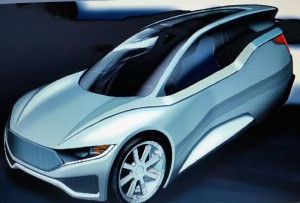 Kroll and Resiner have brought their collective talents together to introduce their new, second generation Electra Meccanica EMV-17. Professionally designed, and with a range of 130 km on a single charge, the lightweight carbon fibre composite EMV-17 is capable of reaching a top speed of 140 km/hr and cruising at 110 km/hr. But here’s what makes the EMV-17 so attractive. It will retail for less than $20,000 Canadian.
Kroll and Resiner have brought their collective talents together to introduce their new, second generation Electra Meccanica EMV-17. Professionally designed, and with a range of 130 km on a single charge, the lightweight carbon fibre composite EMV-17 is capable of reaching a top speed of 140 km/hr and cruising at 110 km/hr. But here’s what makes the EMV-17 so attractive. It will retail for less than $20,000 Canadian.
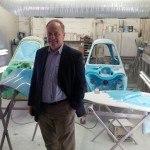 This past spring I had the opportunity to test-drive one of the original Sparrows (see image above). It was incredibly zippy and easy to handle, and I confess that more than a few heads turned as I drove by. Last Friday I was in Vancouver to tour the InterMeccanica facility and their new southeast False Creek location. There were a number of Porsche 356 Roadster and Speedster replicas in various stages of construction in the facility. In addition, two of the first refurbished Sparrows were being constructed.
This past spring I had the opportunity to test-drive one of the original Sparrows (see image above). It was incredibly zippy and easy to handle, and I confess that more than a few heads turned as I drove by. Last Friday I was in Vancouver to tour the InterMeccanica facility and their new southeast False Creek location. There were a number of Porsche 356 Roadster and Speedster replicas in various stages of construction in the facility. In addition, two of the first refurbished Sparrows were being constructed.
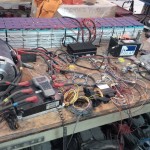 ElectraMeccanica have already sold their first ten 2015 pre-production Sparrow’s. They plan to roll out 120 EMV-17 cars in 2016, a further 1,200 in 2017 and an additional 1,800 in 2018. All of these EMV-17s will be constructed in the Metro Vancouver region.
ElectraMeccanica have already sold their first ten 2015 pre-production Sparrow’s. They plan to roll out 120 EMV-17 cars in 2016, a further 1,200 in 2017 and an additional 1,800 in 2018. All of these EMV-17s will be constructed in the Metro Vancouver region.
While the single occupancy electric vehicle may have struggled in the past, it seems pretty clear to me that times have changed. Obviously the price of gas has increased. But more importantly, there is a much greater awareness of the effects that increasing greenhouse gases are having on our climate. 2014 was a record warm year globally; 2015 is on track to break the record set just last year. In BC we have suffered from an extended drought and wildfires burned out of control this past summer. And things will only get worse.
 In the average British Columbia household, the automobile is the single biggest contributor to greenhouse gas emissions. It therefore represents the single greatest opportunity to reduce these emissions. Vancouver, bounded by the U.S. border to the south, mountains to the north and east, and water to the west, is one of the most ideal markets for the widespread introduction of electric vehicles. Victoria surrounded by water on three sides and the Malahat to the north, represents another. We typically don’t drive great distances daily in Vancouver and Victoria.
In the average British Columbia household, the automobile is the single biggest contributor to greenhouse gas emissions. It therefore represents the single greatest opportunity to reduce these emissions. Vancouver, bounded by the U.S. border to the south, mountains to the north and east, and water to the west, is one of the most ideal markets for the widespread introduction of electric vehicles. Victoria surrounded by water on three sides and the Malahat to the north, represents another. We typically don’t drive great distances daily in Vancouver and Victoria.
So it’s incredibly exciting to see homegrown innovation start to take off in this new, emerging sector of our economy – the clean tech sector. Who knows, pretty soon the 100% electric vehicle won’t be the head-turner. Instead, it will be the inefficient, 8-cyclinder gas guzzler of yesteryear.
Bill 15: Motor Vehicle Amendment Act
Today in the legislature I rose to speak to Bill 15: The Motor Vehicle Amendment Act. The amendments in this bill will affect the AirCare program and the Immediate Roadside Prohibition (IRP) program. It adds an official end to AirCare, which stopped running on December 31st 2014, for light duty passenger cars and trucks. For IRP it legislates mandatory participation in anti-drunk driving programs for repeat offenders (including ignition interlock systems).
Bill 15 would also make it harder for drivers to drive in the left lane of a high-speed highway, specify approved winter tires/use of chains, and allow municipalities to regulate motorcycle parking to within six metres of intersections with traffic control signs or signals.
Below is the text of my speech (note previously Leonard Krog from Nanaimo had me in stitches during his speech a few minutes earlier in the day. I continued the banter towards the end of my speech).
A. Weaver: I, too, echo the sentiments as expressed by the member for Delta South, particularly with respect to the burden of proof, which in several places in this legislation is being moved. “The burden of proof in a review of a driving prohibition” is now on the individual. This is not really consistent with what most British Columbians believe and want to happen in our province — that is, innocent until proven guilty. The implication here, of course, is guilty until proven innocent, and I wonder to what extent that actually would be held up under a legal challenge.
In fact, our Justice Minister admits that the government’s contentious drunk-driving penalties may again be challenged as unconstitutional. In the Vancouver Sun she was quoted as saying, “Yes, it may very well be challenged, but we have great confidence in the program and in the good that the program does for safety on British Columbia’s highways.” I would hope that during third reading we’ll be able to explore this and determine whether or not the Minister of Justice, via the Minister of Transportation, would be able to clarify some of the rationale behind their government getting legal opinion that would support this as actually standing up in courts.
Like the member for Nanaimo, I, too, had many, many groups of people not come to my office concerned about motorcycle parking six metres from the intersections. I gather that this is an issue in some jurisdictions. In Victoria, Oak Bay–Gordon Head, left-lane driving certainly is an issue, as every one of the members here will know, coming from either the ferries or the airport. I think left-lane driving started in Victoria and, in fact, despite this legislation, will never change here in the capital regional district.
There are rules in place already that can deal with left-lane drivers if they’re holding up traffic. I’m not sure that this emphasis on fines and fees is either enforceable or, in fact, will ever be enforceable. Our police system’s services are taxed at the best of times, and pulling over people driving in the left lane is probably not number one on their priorities.
I recognize this populist approach to introducing policy that people will hang their hat on and be all very pleased with. I know everybody at one time has been frustrated — as I was just yesterday, coming back from the airport — when two people are driving side by side on the highway at 70 kilometres an hour when the speed limit is 90. Does that mean we should be ticketing them? Does that mean we should be just maybe perhaps pulling them over and talking with them? There is legislation that would presently allow police to deal with such people if they do, in fact, believe that they are causing a hazard on the road.
One of the things that I was hoping to see in this legislation, which I recognize is minor tinkering with the Motor Vehicle Act, is some discussion about how repeat texters, repeat hand-held device users, are also dealt with. There’s a lot in here implied about drunk-driving legislation, but it really is not much different from repeat offenders of texting. There are those people out there who have been caught many times.
There are means and ways to actually have your phone linked into interlock programs, much like exist for drunk driving. I was wondering. I will explore further at third reading whether the government has actually explored this as perhaps also including interlock repeat texting offender programs. I do applaud the government in actually introducing text to ensure that the person requiring the ignition interlock program does, in fact, pay for it.
In terms of the AirCare program, you might expect someone from the B.C. Green Party to stand up here and criticize government for removing an AirCare program, but the reality of it is that cars have changed in the last decade. Most cars today on the streets have air quality emission standards that are far beyond anything that existed ten years ago. As pointed out in discussions on this legislation, there still is an ability to require people to fix their tailpipe if they are deemed to be driving a car that is creating unsightly or unhealthy air quality emissions.
With that, I do look forward to third reading. I do have some concerns with the left-lane legislation, despite the fact that I agree that it is something that people may consider. I will be likely amending that these be struck from the bill, as I believe they are awfully punitive and are unenforceable, and in fact, legislation already exists on the books to allow police to deal with this.
I believe that these left-lane-hog rules are nothing more than populist politics catering to a demographic that is perhaps not likely to consider voting in the future. This is rather cynical of me, but really, we’ve got some critical issues in this province to deal with. Motorcycle parking six metres from an intersection, left-lane driving….
I recognize that the member for Nanaimo likes the left and the Minister of Aboriginal Relations and Reconciliation likes to drive in the right. You’re not addressing my problem here. My problem is that I like to drive right in the middle in between both lanes, and this legislation ignores people like me.
L. Krog: You know what happens to chickens in the middle of the road.
A. Weaver: The member for Nanaimo has asked me if I know what happens with chickens in the middle of the road. I think it’s important for me to address that. They don’t last very long, but legislation could be brought in place to ensure that they do.
Deputy Speaker: Certainly, the member digresses.
A. Weaver: I’m sorry, hon. Speaker. It was truly, though, a defining moment of my time here in the Legislature when the Minister of Aboriginal Relations and Reconciliation came over and sat beside my colleague here, the member for Nanaimo, and discussed left- versus right-lane driving just a matter of moments ago.
With that, I thank you for your time, and I look forward to third reading.
Deputy Speaker: Seeing no further speakers, the minister closes debate.
Hon. S. Anton: I do appreciate the members’ comments on this important piece of legislation. I look forward to canvassing the issues during the committee stage. Although for the member for Oak Bay–Gordon Head, I’m not sure that we’re going to be able to deal with the middle-lane piece. But I’m confident that the other pieces of the legislation will be dealt with in an appropriate manner when the time comes.
With that, Mr. Speaker, I move second reading of Bill 15.

